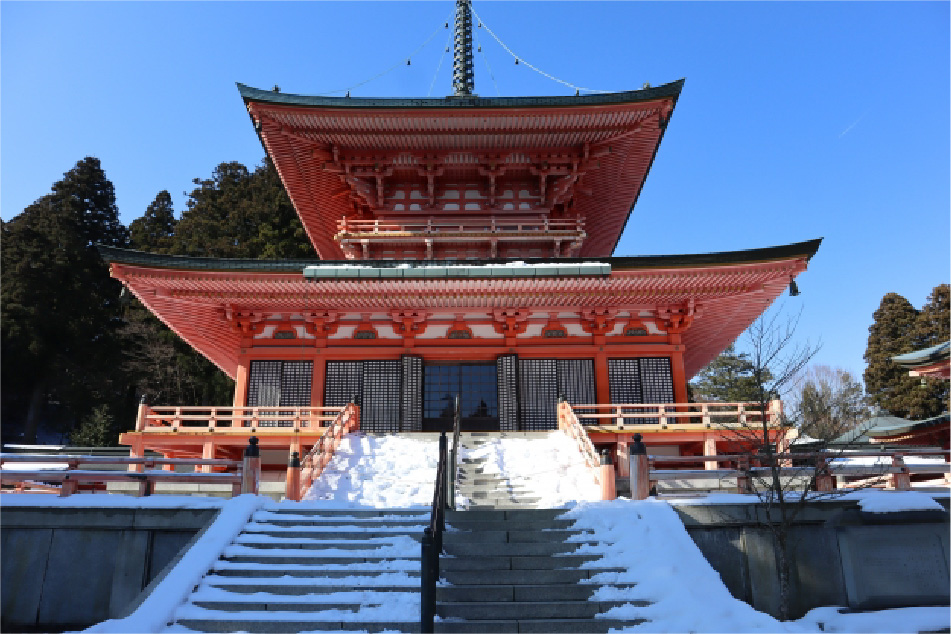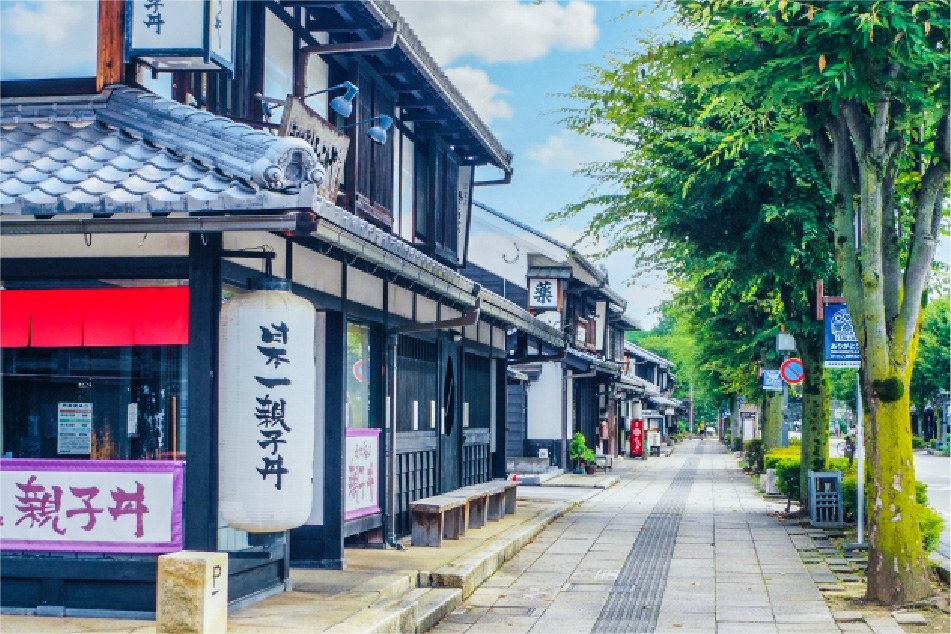
Sightseeing
Shiga Full Experience Plan
Shiga Prefecture is truly unique,
with about one-sixth of its land occupied by a lake.
Thanks to its abundant water resources,
it boasts a rich natural environment.
In addition to its natural beauty,
Shiga is steeped in history, with many locations
preserving the remnants of the past.
This journey will guide you through the natural
and historical charms of Shiga.
-
9:30
- Departure (approx. 1 hour 20 mins)
- The journey begins with a visit to one of Shiga's most renowned World Heritage Sites.
-
10:50
- Enryaku-ji Temple on Mt. Hiei
(approx. 1 hour) - Located on Mt. Hiei, revered as the mother mountain of Japanese Buddhism and celebrated in the Hyakunin Isshu as Japan’s finest mountain, Enryaku-ji is a prestigious temple founded by Saichō, the founder of the Tendai sect. Many monks studied here, preserving the teachings of Tendai Buddhism, and the temple’s architecture and gardens reflect its historical development, earning it recognition as a UNESCO World Cultural Heritage site.
Despite its revered status, the temple suffered through three major burnings, most notably by Oda Nobunaga—referred to as the "Demon King of the Sixth Heaven"—which resulted in the tragic loss of around 4,000 lives, including not only warrior monks but also civilians. This act was not entirely one-sided; despite a written plea from the Asakura and Azai clans (who were opposing Nobunaga) to not shelter them, Enryaku-ji failed to respond, provoking Nobunaga's wrath. Furthermore, the presence of armed monks went against the Buddhist principle of non-violence, which led Nobunaga to carry out the burning as a warning.
After Nobunaga’s death, the temple was allowed to be rebuilt by Toyotomi Hideyoshi under the condition that no warrior monks would be trained. The temple regained its current form during the Edo period. Mt. Hiei is vast, and fully exploring it could take half a day. The temple complex is divided into three areas: Tō-dō (East Pagoda), Sai-tō (West Pagoda), and Yokokawa. For this trip, we will focus on Tō-dō, the main area. Here you’ll find Konpon Chūdō, the main hall and an Important Cultural Property, where the eternal flame of Buddhism, the “Fumetsu no Hōtō,” still burns. Other highlights include Daikō-dō, which has been repeatedly burned and rebuilt, Amida-dō with a beautiful suikinkutsu (water harp cave), and the Hokke Sōjii-in Tōtō, said to have been built to protect Japan.



- Enryaku-ji Temple on Mt. Hiei
-
11:50
- Transfer (approx. 50 mins)
- After experiencing this deeply historical World Heritage Site, the journey continues to Japan’s largest lake.
-
12:40
- Biwako Terrace & Biwako Valley
(approx. 1 hour) - Lake Biwa, the largest lake in Japan, is so vast it feels more like an ocean than a lake. It plays a crucial role in sustaining Shiga’s rich water resources. From here, you’ll ride a ropeway up to the Biwako Terrace, located over 1,100 meters above sea level on Mt. Uchimi. The view from the three-tiered wooden deck offers a breathtaking panorama of Lake Biwa.
There are dining options as well—be sure to try Omi beef steak, a local specialty, or Biwa Lake-themed curry. For those seeking even higher vantage points, take two lifts beyond the ropeway summit to Mt. Hōrai, the highest peak in Biwako Valley. On clear days, you can even see the cities of Kyoto and Osaka—a view you won’t want to miss.


- Biwako Terrace & Biwako Valley
-
13:40
- Transfer (approx. 1.5 hours)
- After enjoying a sky-high view of Japan’s greatest lake, your next stop is a National Treasure built during the Edo period.
-
15:10
- Hikone Castle (approx. 1 hour)
- Hikone Castle was constructed to replace Sawayama Castle, which once belonged to Ishida Mitsunari, after the pivotal Battle of Sekigahara. It became the residence of Ii Naotaka, son of Ii Naomasa, one of the Four Heavenly Kings of the Tokugawa.
What makes Hikone Castle so special is that it was never a battlefield, so many of its original structures still remain. It even houses Japan’s only remaining original stable, which is designated an Important Cultural Property. Other highlights include Genkyūen Garden, a scenic stroll-style garden; the Time Bell Tower, which echoes across the castle grounds; and the three-story watchtower and connecting tower, both Important Cultural Properties that once served as lookout points over Lake Biwa.
The castle’s main keep, a National Treasure, is a rare three-story structure. You can enter and explore the interior, with the top-floor windows offering panoramic views of Hikone city and Lake Biwa.


-
16:10
- Transfer (approx. 10 mins)
- After exploring this National Treasure, the journey continues to the historic castle town streets.
-
16:20
- Yume Kyobashi Castle Road
(approx. 1.5 hours) - This charming street recreates the atmosphere of an Edo-era castle town, with uniformly sloped gable roofs and a townscape of white walls and black latticework. Just walking through the area feels like stepping back in time. You’ll find local souvenirs and traditional Japanese sweets shops inspired by the period.
Yume Kyobashi Castle Road is also an excellent place to enjoy local cuisine, including Omi beef and Omi chicken, making it a perfect spot for a leisurely meal.

- Yume Kyobashi Castle Road
-
17:50
- After enjoying the historic castle town filled with Shiga’s charm, we will escort you to your preferred return location. Please feel free to let us know your destination.
